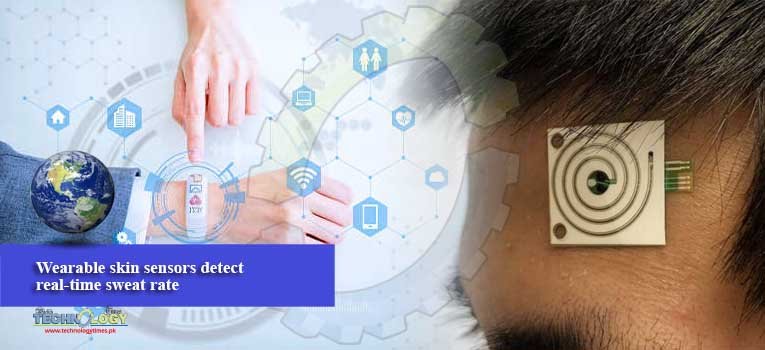A team of scientists at the University of California is developing wearable skin sensors that can detect what’s in your sweat by using a “roll-to-roll” processing technique that essentially prints the sensors onto a sheet of plastic like words on a newspaper.
 They used the sensors to monitor the sweat rate, and the electrolytes and metabolites in sweat, from volunteers who were exercising, and others who were experiencing chemically induced perspiration.
They used the sensors to monitor the sweat rate, and the electrolytes and metabolites in sweat, from volunteers who were exercising, and others who were experiencing chemically induced perspiration.
The new sensors contain a spiraling microscopic tube, or microfluidic, that wicks sweat from the skin. By tracking how fast the sweat moves through the microfluidic, the sensors can report how much a person is sweating, or their sweat rate.
The microfluidics are also outfitted with chemical sensors that can detect concentrations of electrolytes like potassium and sodium, and metabolites like glucose.
Javey and his team worked with researchers at the VTT Technical Research Center of Finland to develop a way to quickly manufacture the sensor patches in a roll-to-roll processing technique similar to screen printing.
To better understand what sweat can say about the real-time health of the human body, the researchers first placed the sweat sensors on different spots on volunteers’ bodies including the forehead, forearm, underarm and upper back and measured their sweat rates and the sodium and potassium levels in their sweat while they rode on an exercise bike.
They found that local sweat rate could indicate the body’s overall liquid loss during exercise, meaning that tracking sweat rate might be a way to give athletes a heads up when they may be pushing themselves too hard.
They also used the sensors to compare sweat glucose levels and blood glucose levels in healthy and diabetic patients, finding that a single sweat glucose measurement cannot necessarily indicate a person’s blood glucose level.